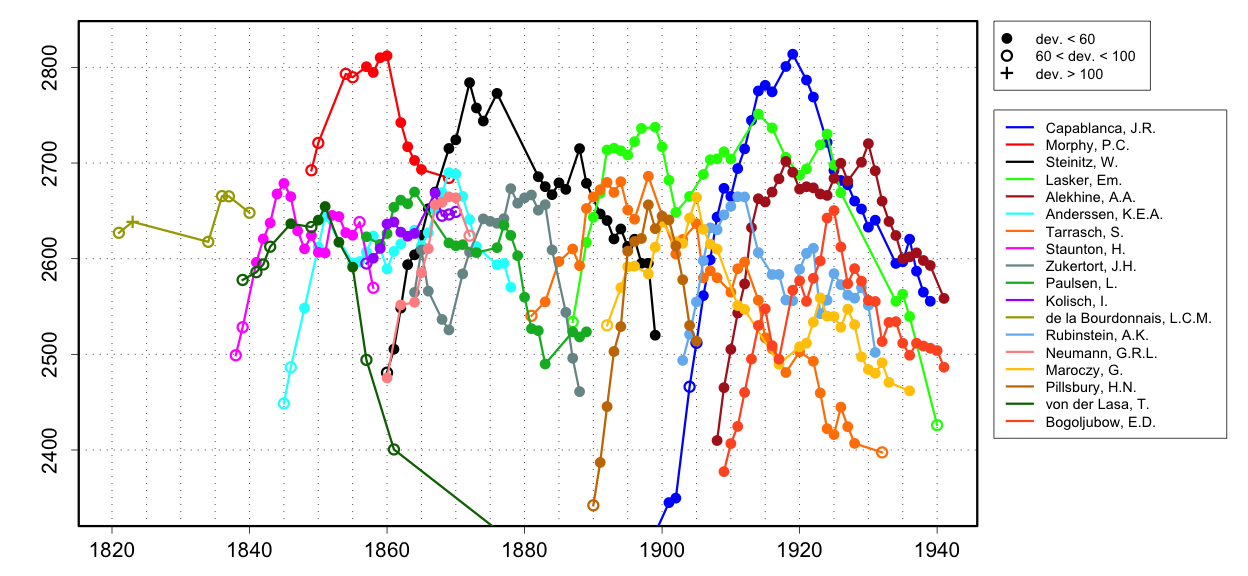

 The Edo Historical Chess Rating system is a novel approach to the retroactive rating of chess players over time. Ratings over the whole period are calculated simultaneously by an iterative method (Bradley-Terry). Similar iterative methods have been used before (by Elo, for example, to initialize the FIDE ratings in 1970), but in a static way, to estimate playing strengths at a particular time. The Edo system uses the simple (but new) idea of treating a single player in different years as separate players, and positing hypothetical drawn self-games between the same player in consecutive years. For example, Staunton-1845 is considered to have played a 30-game match with Staunton-1844 with a resulting score of 15-15. This keeps each player's rating from changing too dramatically in response to every year's performance, which is subject to random variations. Then, an adjustment is made to account for a known underlying distribution of playing strengths of all chess players in general - very high or very low ratings being inherently less likely than average ones. This adjustment decreases the effect of anomalous scores for players with very few game results. The Edo system has been implemented with a data set that relies on historically recorded match and tournament results, not on individual games, whose selection in historical records is often biased. My main sources at first were Jeremy Spinrad's collected results for 1836-1863, Jeremy Gaige's Chess Tournament Crosstables (vols.1, 2, 3, and 4), and Gino Di Felice's Chess Results series, as well as other standard texts and reliable web sites, but I have increasingly been scouring primary (19th century) sources.
|